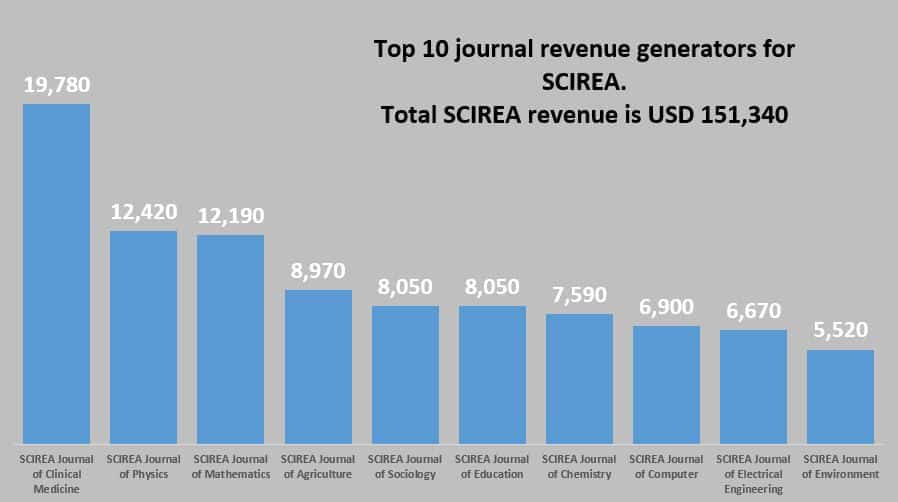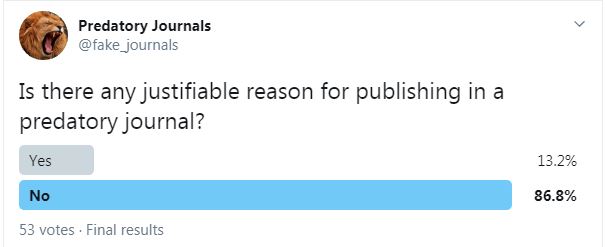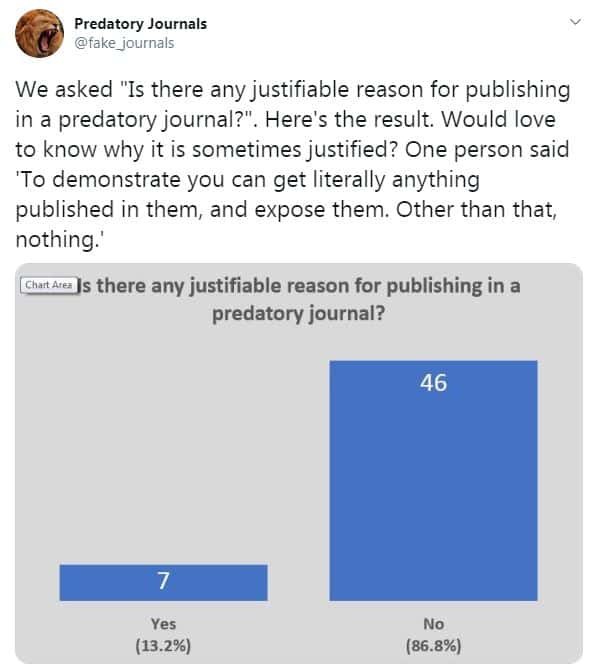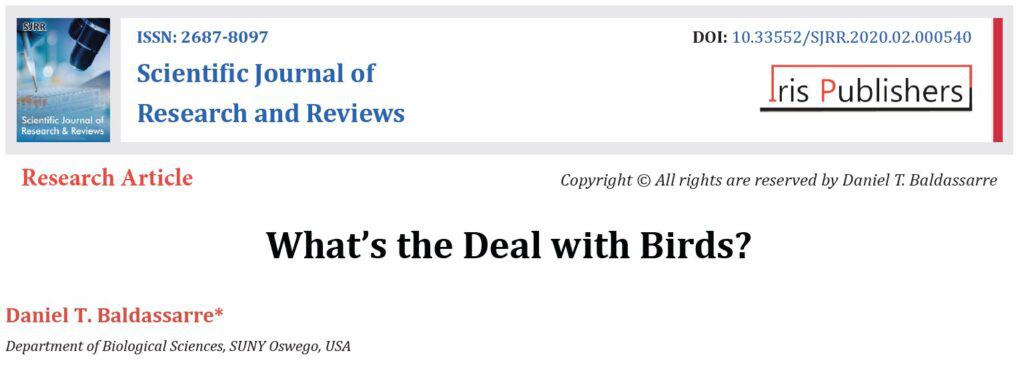In this article, we consider SCIREA’s revenue in an attempt to estimate how much profit this publisher makes. It is difficult to be precise, as we do not have access to their accounts or their business model, but we estimate their revenue to be USD 151,340, with a profit of about USD 121,072.
We have previously looked at the the number of editors that the publisher SCIREA had on each of its 39 journals, concluding that, on average, each editor handled (much) less than one paper every five years.
Who are SCIREA?
SCIREA are a scientific publisher, with a portfolio of 39 journals (as at Jul 2021). We made additional observations in our previous article and, if you would like to know more, we refer you to that article.
Data Collection
We used the same data (and therefore the same data collection) that we outlined in our previous article.
Some items of data were slightly updated, due to the difference in dates when these two articles were written, but this just meant adding a few more articles as some of the journals had published an August 2021 issue. We also found one mistake, which we corrected.
We also collected the first date that each journal was published, as well as the last date the journal published an issue.
We checked the Article Processing Charges for each journal and they were all USD 230.
This data was collected on 30 July 2021.
Financial Assumptions
The Article Processing Fees (APC) for every journal is USD 230. We have no way of knowing whether the APC was the same when the majority of the journals were established in 2016.
We could make some assumptions, such as the APCs started at USD 200 in 2016 and has increased gradually since that time, but we thought it sensible to assume that it has always been USD 230 and let others use their own judgement when looking the figures that we derive using this assumption.
[table id=073_001 /]
SCRIEA's Revenue
Table 1 shows the 39 journals that are published by SCIREA. It shows the journal name, how many articles it has published and the revenue this generates, assuming an APC of USD 230 (so the number of journals is multiplied by 230). We have shown the top 10 journals graphically in Figure 1, as some readers may prefer this type of presentation.
The journal that generates the most income is the SCIREA Journal of Clinical Medicine. This journalhas published 86 articles (since October 2016) resulting in (86 x 230) = USD 19,780, in terns of revenue. The next two journals have published 54 and 53 journals, generating revenue of USD 12,420 and USD 12,190 respectively.
In Figure 1, we have also noted the total revenue for SCIREA, across all of its 39 journals. This amounts to USD 151,340, which represents the 658 article that SCIREA have published.
We actually find this figure quite surprising. SCIREA has been running for almost five years and income of just over USD 150,000 does not seem that much? It equates to USD 30,000 per year, which seems low for any business. Anyhow, it is not our job to question the business/financial model, but we we were just expecting a much larger number.
Revenue is only half the story
In any business, looking at the revenue only gives you part of the story. You also need to consider the expenses that the business will incur.
For a scientific publisher, this might include:
Payroll costs are difficult to ascertain as we do not have access to SCIREA’s accounts and there is no information on the publisher’s web site that we can use to see how many people this business has to support.
For SCIREA, costs such for ISSN’s and DOI’s are not applicable as, as far as we can tell, they have not incurred these expenses.
There are no printing and distribution costs, as all of SCIREA’s journals are online.
Indeed, the only real cost we can identify are web hosting costs and these are minimal these days.
So, it is difficult to provide any real detail about the expenses incurred by SCIREA and if the publisher would like to share their accounts with us, that would be useful. Realistically though (and we understand why) they are unlikely to do this but we would like to offer them to opportunity to write a guest post, so that they can they present their view of their financial model.
We think it reasonable to assume that their costs are likely to be less than 20% of their revenue. To be honest, it is probably a lot less than 20%, but let’s allow for expenses that we are not aware of.
So, if we assume that SCIREA’s profit is 80% of revenue, based on a revenue of USD 151,340, they would have realized a profit of (151,340 * 0.8) = 121,072, over the last five years.
Final Remarks
We have estimated that SCIREA have returned a profit of USD 121,072, over the last five years. This must be seen through the many assumptions we have made, as well as not having access to their accounts or their business plans.
The big unknown, in our view, is the staff (payroll) costs that SCIREA supports. If they had (say) two full time staff, this is likely to wipe out any profit, though it could still still be a sustainable business.
Our hope is that the publisher reads this article and takes up of our offer to write a guest post, or provide a copy of their accounts. This would enable them to give their point of view, rather than us just relying on assumptions and what we feel is right.
See more on Twitter
We have been tweeting about SCIREA. If you want to take a look at what we have been saying, follow this link.






